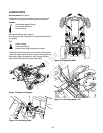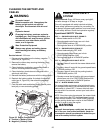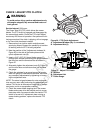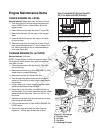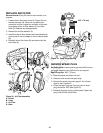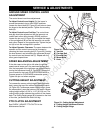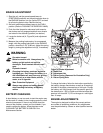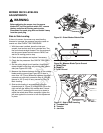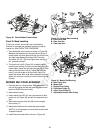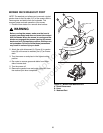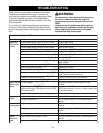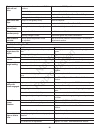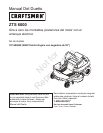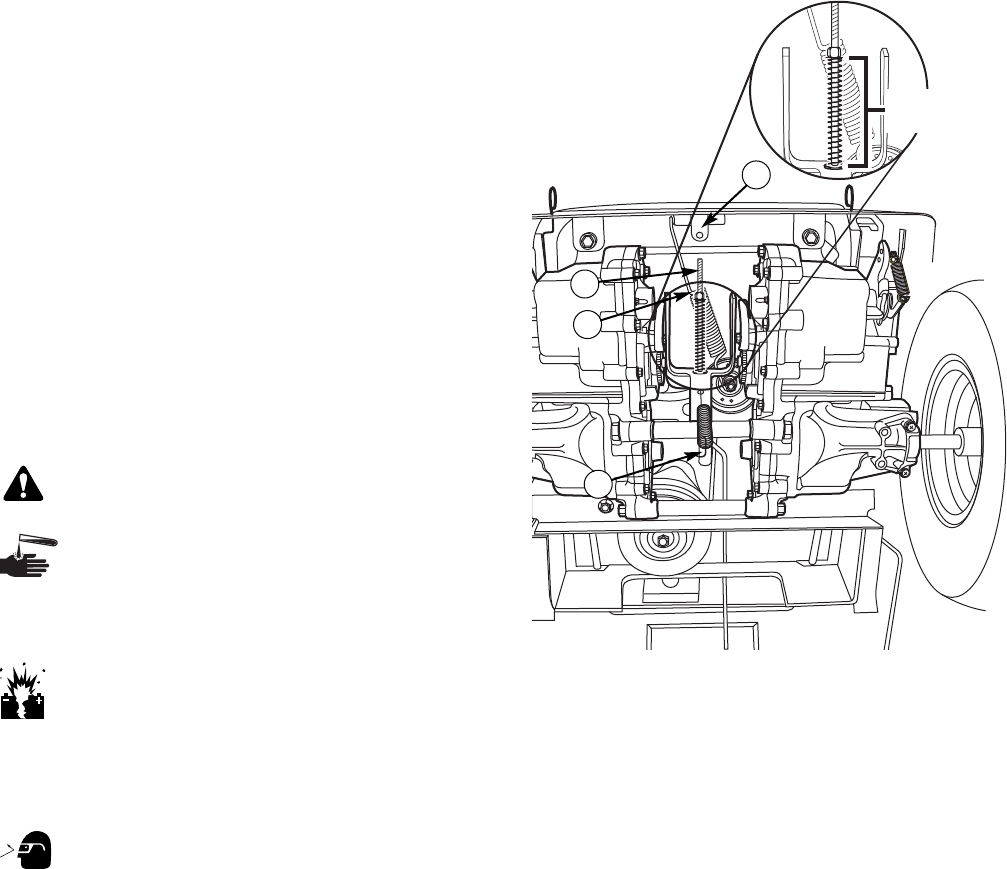
30
BRAKE ADJUSTMENT
1. Stop the unit, set the ground speed levers to
START/PARK positions, set the parking brake lever to
the ENGAGE position, turn the ignition OFF, and wait
for all moving parts to stop. Remove the key.
2. Set both transmission release levers to the PUSH
position. (Refer to PUSHING THE RIDER BY HAND.)
3. Push the rider forward to make sure both transmis-
sion brakes are fully engaged and both rear wheels
are locked in the stationary position (no rotation).
4. Locate the brake rod (A, Figure 34) and adjustment
nut (B).
5. Measure the parking brake spring. Its compressed
length, with the parking brake lever in the ENGAGE
position, should be 3-1/2” (8,89 cm). Adjust the spring
length by turning the adjustment nut (B), if necessary.
WARNING
Figure 34. Brake Adjustment
A. Brake Rod
B. Adjustment Nut
C. Return Spring (Removed for Illustration Only)
D. Return Spring Hole
3" (7.62cm)
A
B
C
D
Corrosion hazard.
Batteries contain acid. Always keep the
battery upright and do not spill the
electrolyte. Avoid contact with skin and
eyes.
Explosion hazard.
Changing the battery produces explosive
hydrogen gas. Only charge the battery in a
well ventilated area, away from any ignition
source such as a water heater, electric
motor, or a lit cigarette.
Wear Protective Equipment
Always wear gloves and safety glasses
when handling the battery and battery
cables.
BATTERY CHARGING
A dead battery or one too weak to start the engine may
be the result of a defect in the charging system or other
electrical component. If there is any doubt about the
cause of the problem, contact your local dealer. If you
need to replace the battery, follow the steps under
CLEANING THE BATTERY & CABLES in the
Maintenance Section.
To charge the battery, follow the instructions provided by
the battery charger manufacturer as well as all warnings
included in the safety rules sections of this book. Charge
the battery until fully charged (until the specific gravity of
the electrolyte is 1.250 or higher and the electrolyte tem-
perature is at least 60° F). Do not charge at a rate higher
than 10 amps.
ENGINE ADJUSTMENTS
The engine is designed to deliver the correct perform-
ance under all operating conditions. Any adjustments
must be performed by a Sears or other qualified service
dealer.
Not for
Reproduction




